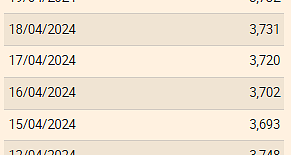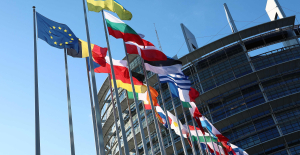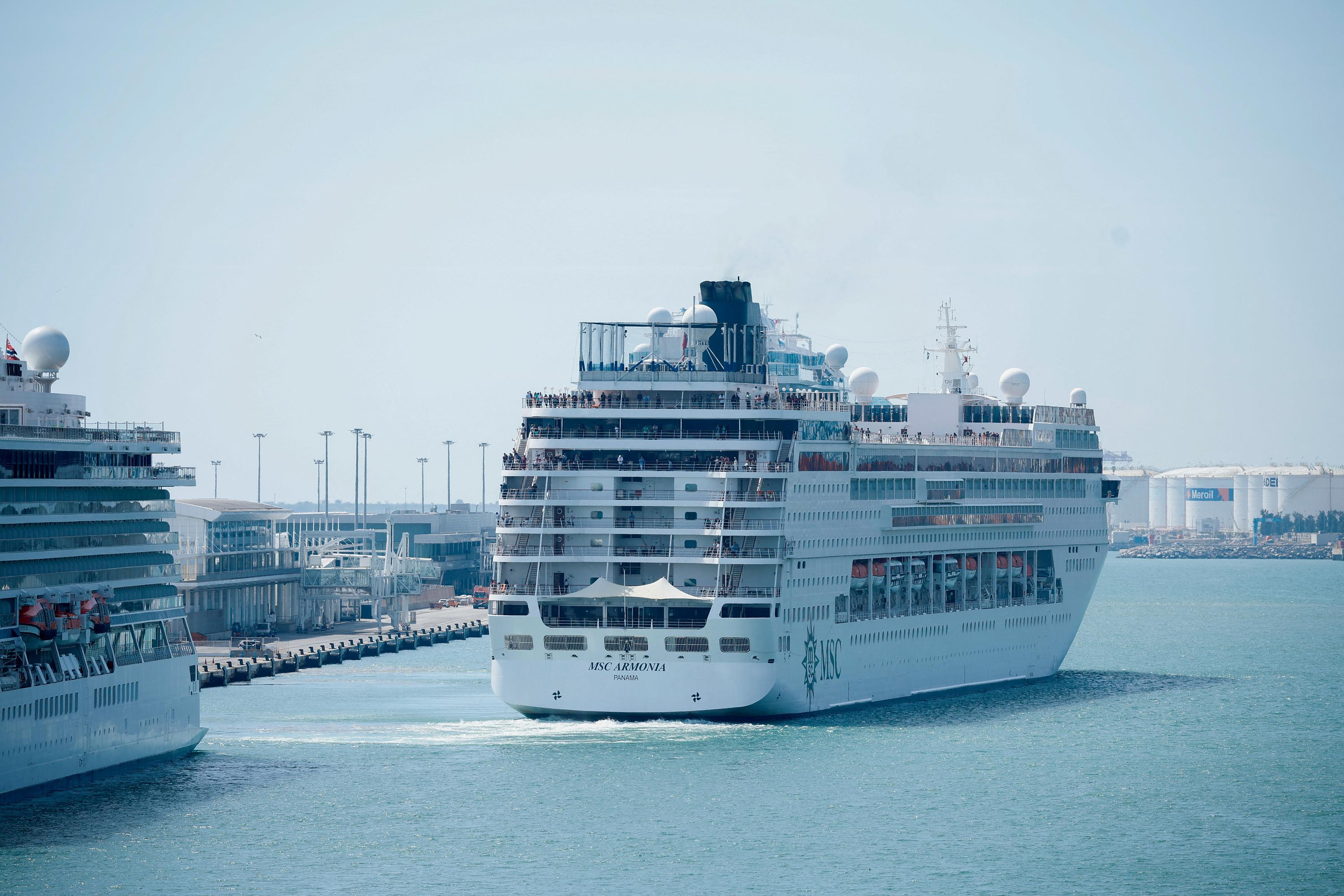The South Pacific Cook Islands can adorn themselves with a superlative that unfortunately has many problems: The island state officially has the fattest population in the world. According to data from the World Health Organization (WHO), almost 51 percent of the population has a body mass index of over 30. In Germany, this proportion is around 25 percent - which is also unpleasantly high, but still a long way from the Cook Islands.
More than half of the island's inhabitants suffer from morbid obesity. This has drastic consequences: obesity increases the risk of cardiovascular diseases, diabetes and strokes, and life expectancy is shortened.
The Cook Islands are not alone in the southern Pacific with the problem: in Samoa, Tonga, Fiji, Nauru and Vanuatu, too, many simply have too much on their ribs. In the list of countries with the highest proportion of obese people, eight countries from the South Pacific region are among the top ten. But why is that?
We go straight to the search for clues - but before that it's your turn. What do you think:
There is no general answer as to why the South Pacific island states and in particular the Cook Islands have had to contend with morbid obesity in the population in recent decades. According to the WHO, there are several causes. One of them lies in the colonial past of the archipelago.
In 1888 the Cook Islands became a British protectorate, and in 1901 they became the first South Pacific colony of New Zealand, which was then part of the British Empire. The Cook Islands only gained independence in 1965. However, the influence of the British colonial rulers had a drastic effect on the diet of the islanders, who traditionally ate mainly fish and vegetables.
Over time, this traditional diet has been increasingly replaced by imported, unhealthier foods. British researchers from the University of Oxford found this connection in a study from 2014. The formerly natural foods have been replaced by heavily processed industrial foods and canned foods. They have a significantly higher caloric value and often contain more sugar.
Food and feasts are also seen as a sign of appreciation in South Pacific culture. The more you are offered, the more you will be respected. No savings are made here – and holding back is considered impolite. This attitude towards meals could also promote morbid obesity.
As a report by the radio station “Deutschlandfunk Kultur” from 2021 describes, the above-average health care in the region could also be to blame for the morbid obesity. In most South Pacific island countries, including the Cook Islands, locals do not have to pay for their doctor and hospital treatment. The state pays for them.
Many are well aware that it is not healthy to eat so much and that there is a risk of diseases such as diabetes and high blood pressure. But, says the doctor Saia Pauiele to the "Deutschlandfunk Kultur": "Everyone is currently thinking: We do what we want. If we get sick, they will take care of us for free.”
At least the results of a study from 2016 suggest this connection. The research results of the doctors from the USA and Polynesia refer to the population of Samoa. But the experts believe it is quite possible that a genetic predisposition to obesity can also be found in other South Pacific islanders.
A hereditary factor that promotes the growth of fat cells could be to blame for the high body weight. From an evolutionary point of view, this was even important for survival, the researchers write: the thrift gene for fat reserves ensured the survival of the Samoans in times when there was not enough food. Until colonization, the Samoans ate almost no carbohydrates. Approximately one in four Samoans still carries the variant of the metabolic gene.
Another problem is that many of the islands in the South Pacific hardly ever grow their own food. One of the reasons for this is that tourism is the most important economic sector for most countries there and that is where most of the money can be earned. Instead of growing their own fruit and vegetables, a lot of food is exported from abroad - mostly by ship.
As a result, a large number of the foods offered in Avarua, Suva or Apia supermarkets are highly processed products with many ingredients and preservatives. As a result, some governments are now imposing higher import duties on unhealthy, imported foods. The additional income should then be used to subsidize expenses for health care.
Fitness programs and public sports fields are also intensively promoted. Because although the citizens of the Cook Islands love sports such as rugby, cricket or netball, they rarely play sports themselves in their free time. Other tasks take precedence, such as taking care of the family or doing chores around the house when you are not busy with your regular job.
So the problem of excess pounds in the Cook Islands is based on many different factors. The good news, however, is that there are solutions. The future will show whether and how quickly they work.
You want even more superlatives? Right this way:

 The Euribor today remains at 3.734%
The Euribor today remains at 3.734% Germany: the trial of an AfD leader, accused of chanting a Nazi slogan, resumes this Tuesday
Germany: the trial of an AfD leader, accused of chanting a Nazi slogan, resumes this Tuesday New York: at Columbia University, the anti-Semitic drift of pro-Palestinian demonstrations
New York: at Columbia University, the anti-Semitic drift of pro-Palestinian demonstrations What is Akila, the mission in which the Charles de Gaulle is participating under NATO command?
What is Akila, the mission in which the Charles de Gaulle is participating under NATO command? What High Blood Pressure Does to Your Body (And Why It Should Be Treated)
What High Blood Pressure Does to Your Body (And Why It Should Be Treated) Vaccination in France has progressed in 2023, rejoices Public Health France
Vaccination in France has progressed in 2023, rejoices Public Health France Food additives suspected of promoting cardiovascular diseases
Food additives suspected of promoting cardiovascular diseases “Even morphine doesn’t work”: Léane, 17, victim of the adverse effects of an antibiotic
“Even morphine doesn’t work”: Léane, 17, victim of the adverse effects of an antibiotic MEPs validate reform of EU budgetary rules
MEPs validate reform of EU budgetary rules “Public Transport Paris 2024”, the application for Olympic Games spectators, is available
“Public Transport Paris 2024”, the application for Olympic Games spectators, is available Spotify goes green in the first quarter and sees its number of paying subscribers increase
Spotify goes green in the first quarter and sees its number of paying subscribers increase Xavier Niel finalizes the sale of his shares in the Le Monde group to an independent fund
Xavier Niel finalizes the sale of his shares in the Le Monde group to an independent fund Owner of Blondie and Shakira catalogs in favor of $1.5 billion offer
Owner of Blondie and Shakira catalogs in favor of $1.5 billion offer Cher et Ozzy Osbourne rejoignent le Rock and Roll Hall of Fame
Cher et Ozzy Osbourne rejoignent le Rock and Roll Hall of Fame Three months before the Olympic Games, festivals and concert halls fear paying the price
Three months before the Olympic Games, festivals and concert halls fear paying the price With Brigitte Macron, Aya Nakamura sows new clues about her participation in the Olympics
With Brigitte Macron, Aya Nakamura sows new clues about her participation in the Olympics Skoda Kodiaq 2024: a 'beast' plug-in hybrid SUV
Skoda Kodiaq 2024: a 'beast' plug-in hybrid SUV Tesla launches a new Model Y with 600 km of autonomy at a "more accessible price"
Tesla launches a new Model Y with 600 km of autonomy at a "more accessible price" The 10 best-selling cars in March 2024 in Spain: sales fall due to Easter
The 10 best-selling cars in March 2024 in Spain: sales fall due to Easter A private jet company buys more than 100 flying cars
A private jet company buys more than 100 flying cars This is how housing prices have changed in Spain in the last decade
This is how housing prices have changed in Spain in the last decade The home mortgage firm drops 10% in January and interest soars to 3.46%
The home mortgage firm drops 10% in January and interest soars to 3.46% The jewel of the Rocío de Nagüeles urbanization: a dream villa in Marbella
The jewel of the Rocío de Nagüeles urbanization: a dream villa in Marbella Rental prices grow by 7.3% in February: where does it go up and where does it go down?
Rental prices grow by 7.3% in February: where does it go up and where does it go down? Europeans: “All those who claim that we don’t need Europe are liars”, criticizes Bayrou
Europeans: “All those who claim that we don’t need Europe are liars”, criticizes Bayrou With the promise of a “real burst of authority”, Gabriel Attal provokes the ire of the opposition
With the promise of a “real burst of authority”, Gabriel Attal provokes the ire of the opposition Europeans: the schedule of debates to follow between now and June 9
Europeans: the schedule of debates to follow between now and June 9 Europeans: “In France, there is a left and there is a right,” assures Bellamy
Europeans: “In France, there is a left and there is a right,” assures Bellamy These French cities that will boycott the World Cup in Qatar
These French cities that will boycott the World Cup in Qatar Serie A: Bologna surprises AS Rome in the race for the C1
Serie A: Bologna surprises AS Rome in the race for the C1 Serie A: Marcus Thuram king of Italy, end of the debate for the position of number 9 with the Blues?
Serie A: Marcus Thuram king of Italy, end of the debate for the position of number 9 with the Blues? Milan AC-Inter Milan: Thuram and Pavard impeccable, Hernandez helpless… The tops and flops of the derby
Milan AC-Inter Milan: Thuram and Pavard impeccable, Hernandez helpless… The tops and flops of the derby Ligue 2: Auxerre leader, Bordeaux in crisis, play-offs... 5 questions about an exciting end of the season
Ligue 2: Auxerre leader, Bordeaux in crisis, play-offs... 5 questions about an exciting end of the season


















